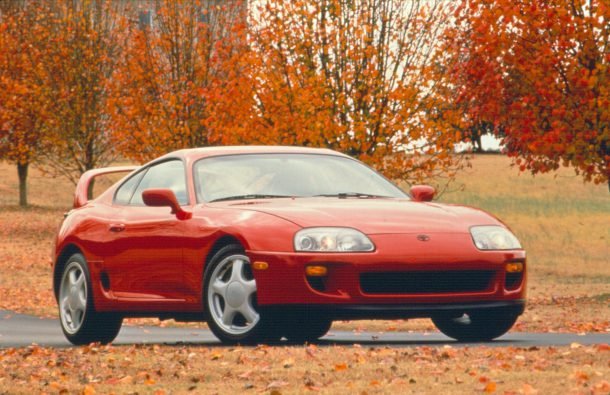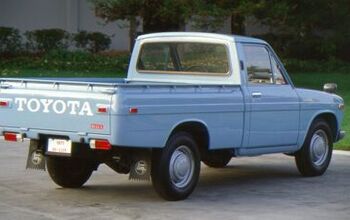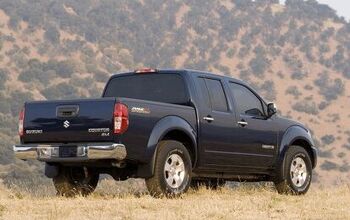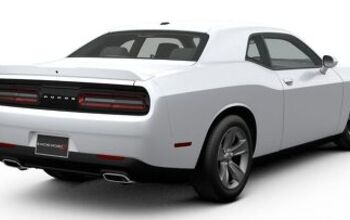Buy/Drive/Burn: Japanese Sports Cars From 1995

Today we decide which of three legendary and sporty Japanese coupe gets the flamethrower. Will it be the Toyota, the Mazda, or the Nissan? All of these vehicles are the last in their line, so this one might be a bit difficult.
Rear-drive, serious performance, twin-turbo motors, and sweet styling are the hallmarks of today’s trio — the short-lived pinnacle of the ’90s Japanese sports car.
Toyota Supra
The fourth generation Supra model began production in early 1993, as Toyota aimed to take its sports car in a more serious direction. Performance and handling were at the forefront of this new A80; previously those two had taken a back seat to luxury appointments and more brougham styling.
All Supras had the same 2ZJ inline-six engine, either with or without a turbocharger. Naturally aspirated versions had 220 horsepower, while turbo versions upped that figure to an impressive 320. Today’s selection is a turbo with six-speed manual — the best one. A four-speed automatic was also available, and was forced upon consumers starting with the ’96 model because of OBD-II requirements. 0-60 mph is yours in 4.6 seconds. Declining sports coupe sales would see Supra exit Canada after 1996, and the U.S. after 1998, with all ’98 models being of the naturally aspirated persuasion.
Mazda RX-7
Mazda’s RX-7 is the only rotary on offer today, not that it’s any surprise. In its third generation for the 1993 model year in the United States, Mazda nerds call it the FD. Like the Toyota, Mazda intended to tighten up the RX-7 and give it more serious credentials. While the 1.3-liter rotary engine carried over from the prior (FC) generation, the power figures did not. The previous model in turbo variation made between 202 and 215 horsepower; this time the figure was 276. A four-speed automatic or five-speed manual greeted customers, and obviously we’ve chosen the manual for today’s purposes. Though down on power over the Supra, it’s also between 600 and 800 pounds lighter, and that makes a difference. Short-lived, 1995 was the last year of the FC in North America, and RX-7 availability in other places ended after 2002.
Nissan 300ZX
Though the 300ZX was only the second version of its particular model name, the Z-car family stretches back to 1969, three generations prior to this Z32. For 1990, the Z32 300ZX replaced the predecessor Z31’s boxy shape and upright lines with smooth curves and a wide profile. The same VG30 3.0-liter V6 engine carried over from the prior model, but power increased like the others in our trio. A Z31 turbo managed 205 horsepower; the Z32 twin-turbo upped this figure to an even 300. Available in short (2-seat) and long wheelbase formats (2+2), today’s selection is a 2-seat hardtop version (no t-top) and punches in about the same weight as the Supra. Though the 300ZX would continue on in other markets through 2000, Nissan pulled it from the North American lineup after the ’96 model year.
Three great cars, six combined turbos. Will burning one Make You Cry?
[Images: Toyota, Wikipedia, Nissan]

Interested in lots of cars and their various historical contexts. Started writing articles for TTAC in late 2016, when my first posts were QOTDs. From there I started a few new series like Rare Rides, Buy/Drive/Burn, Abandoned History, and most recently Rare Rides Icons. Operating from a home base in Cincinnati, Ohio, a relative auto journalist dead zone. Many of my articles are prompted by something I'll see on social media that sparks my interest and causes me to research. Finding articles and information from the early days of the internet and beyond that covers the little details lost to time: trim packages, color and wheel choices, interior fabrics. Beyond those, I'm fascinated by automotive industry experiments, both failures and successes. Lately I've taken an interest in AI, and generating "what if" type images for car models long dead. Reincarnating a modern Toyota Paseo, Lincoln Mark IX, or Isuzu Trooper through a text prompt is fun. Fun to post them on Twitter too, and watch people overreact. To that end, the social media I use most is Twitter, @CoreyLewis86. I also contribute pieces for Forbes Wheels and Forbes Home.
More by Corey Lewis
Latest Car Reviews
Read moreLatest Product Reviews
Read moreRecent Comments
- Namesakeone If I were the parent of a teenage daughter, I would want her in an H1 Hummer. It would be big enough to protect her in a crash, too big for her to afford the fuel (and thus keep her home), big enough to intimidate her in a parallel-parking situation (and thus keep her home), and the transmission tunnel would prevent backseat sex.If I were the parent of a teenage son, I would want him to have, for his first wheeled transportation...a ride-on lawnmower. For obvious reasons.
- ToolGuy If I were a teen under the tutelage of one of the B&B, I think it would make perfect sense to jump straight into one of those "forever cars"... see then I could drive it forever and not have to worry about ever replacing it. This plan seems flawless, doesn't it?
- Rover Sig A short cab pickup truck, F150 or C/K-1500 or Ram, preferably a 6 cyl. These have no room for more than one or two passengers (USAA stats show biggest factor in teenage accidents is a vehicle full of kids) and no back seat (common sense tells you what back seats are used for). In a full-size pickup truck, the inevitable teenage accident is more survivable. Second choice would be an old full-size car, but these have all but disappeared from the used car lots. The "cute small car" is a death trap.
- W Conrad Sure every technology has some environmental impact, but those stuck in fossil fuel land are just not seeing the future of EV's makes sense. Rather than making EV's even better, these automakers are sticking with what they know. It will mean their end.
- Add Lightness A simple to fix, strong, 3 pedal car that has been tenderized on every corner.





































Comments
Join the conversation
Drive the RX7, burn the other 2, collect the insurance and buy an SC300
Buy the RX-7 and take it out on track days. Remove the silly sequential turbo setup and install a single big turbo. So what if you pop the motor? LSxFTW. Drive the Supra because it's Toyota-reliable. Burn the 300ZX because every repair takes at least twelve hours. I once watched another technician spend about fifteen hours removing and reinstalling the engine on a naturally-aspirated 300ZX to replace a $15 knock sensor.